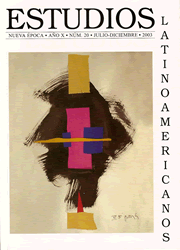The European Market and the FTAA: two contrasting business strategies?
Main Article Content
Abstract
To better insert within globalization, the Latin American economies made radical moves in terms of economic-trade relations with the world in the 1990s. Besides treaties deriving from multilateral agreements, first within the GATT and later under the WTO, some bilateral and regional on trade initiatives took place throughout the region. However, only Mexico and Chile enabled to have agreements with the United States and Europe. Eager to have more economic influence, the United States proposed a regional agreement under the American Trade for the Americas. It basically liberalizes all the economic activity in all countries, except in Cuba. Not wanting to get behind the United States, the European offered a development plan with MERCOSUR and the Anden Community. The author analyzes such propositions and their implications, and how they are driven to drag the region in the global economy.
Downloads
Download data is not yet available.
Article Details
How to Cite
Piñón Antillón, R. M. (2003). The European Market and the FTAA: two contrasting business strategies?. Estudios Latinoamericanos, 10(20), 111–128. https://doi.org/10.22201/cela.24484946e.2003.20.50058
Citas en Dimensions Service

Este obra está bajo una licencia de Creative Commons Reconocimiento-NoComercial-SinObraDerivada 4.0 Internacional.

